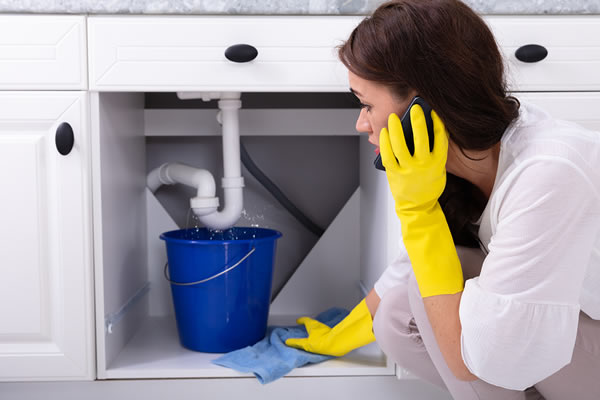Just how to Inspect If Your House Has a Covert Leak
Just how to Inspect If Your House Has a Covert Leak
Blog Article
On this page down the page you will discover some exceptional content concerning Leaking water lines.

Early detection of dripping water lines can reduce a possible disaster. Some little water leakages might not be visible.
1. Check Out the Water Meter
Every home has a water meter. Examining it is a surefire manner in which helps you find leakages. For starters, shut off all the water resources. Guarantee nobody will flush, make use of the faucet, shower, run the cleaning equipment or dishwasher. From there, most likely to the meter and also watch if it will alter. Given that no one is using it, there should be no activities. That shows a fast-moving leakage if it moves. Also, if you find no changes, wait a hr or two as well as inspect back once more. This implies you may have a slow leak that might even be below ground.
2. Inspect Water Intake
Assess your water bills as well as track your water usage. As the one paying it, you need to discover if there are any type of disparities. If you detect sudden changes, despite your consumption being the same, it implies that you have leaks in your plumbing system. Bear in mind, your water costs need to drop under the very same array monthly. A sudden spike in your costs shows a fast-moving leak.
A constant increase every month, also with the exact same habits, shows you have a slow-moving leak that's additionally gradually intensifying. Call a plumber to thoroughly check your building, particularly if you really feel a warm area on your flooring with piping beneath.
3. Do a Food Coloring Examination
30% comes from bathrooms when it comes to water usage. Test to see if they are running properly. Drop specks of food shade in the tank and also wait 10 minutes. If the color somehow infiltrates your dish during that time without flushing, there's a leakage between the container as well as bowl.
4. Asses Exterior Lines
Don't forget to examine your outside water lines as well. Test spigots by attaching a yard pipe. Ought to water permeate out of the link, you have a loose rubber gasket. Change this and also ensure all links are limited. It will help obtain it properly took a look at and also preserved annually if you've obtained a sprinkler system. One little leakage can squander tons of water and also spike your water expense.
5. Examine as well as Evaluate the Circumstance
Homeowners should make it a practice to inspect under the sink counters and also even inside cupboards for any type of bad odor or mold and mildew growth. These two red flags suggest a leak so timely interest is needed. Doing regular examinations, even bi-annually, can save you from a major issue.
If you understand your house is currently old, maintain a careful eye on your heaters, hose pipes, pipes etc. Look for stainings as well as damaging as most devices and also pipelines have a life span. They will certainly likewise naturally weaken because of deterioration. If you presume dripping water lines in your plumbing system, don't wait for it to rise. Call a professional plumber immediately so you don't end up with a terrible mess in your house.
Early detection of dripping water lines can reduce a possible catastrophe. Some little water leaks might not be visible. Inspecting it is a surefire method that aids you find leakages. One tiny leak can waste heaps of water and surge your water costs.
If you presume dripping water lines in your plumbing system, don't wait for it to rise.
WARNING SIGNS OF WATER LEAKAGE BEHIND THE WALL
PERSISTENT MUSTY ODORS
As water slowly drips from a leaky pipe inside the wall, flooring and sheetrock stay damp and develop an odor similar to wet cardboard. It generates a musty smell that can help you find hidden leaks.
MOLD IN UNUSUAL AREAS
Mold usually grows in wet areas like kitchens, baths and laundry rooms. If you spot the stuff on walls or baseboards in other rooms of the house, it’s a good indicator of undetected water leaks.
STAINS THAT GROW
When mold thrives around a leaky pipe, it sometimes takes hold on the inside surface of the affected wall. A growing stain on otherwise clean sheetrock is often your sign of a hidden plumbing problem.
PEELING OR BUBBLING WALLPAPER / PAINT
This clue is easy to miss in rooms that don’t get much use. When you see wallpaper separating along seams or paint bubbling or flaking off the wall, blame sheetrock that stays wet because of an undetected leak.
BUCKLED CEILINGS AND STAINED FLOORS
If ceilings or floors in bathrooms, kitchens or laundry areas develop structural problems, don’t rule out constant damp inside the walls. Wet sheetrock can affect adjacent framing, flooring and ceilings.
https://www.servicemasterbyzaba.com/blog/how-to-detect-water-leakage-in-walls/

Do you really like reading about Hacks to detect leaks? Post feedback down below. We would be glad to know your suggestions about this content. Hoping that you come back again before long. Do you know somebody else who is enthusiastic about the subject? Be sure promote it. Thank you so much for your time spent reading it.
Report this page